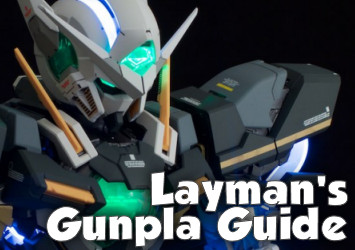
Starting in 2009, Toei's refurbished, "refreshed" version of Dragon Ball Z began to air on FujiTV. It recieved high ratings throughout, but was cancelled after 98 episodes (97 aired, 1 DVD/Blu-Ray exclusive). The purpose behind this creation, Dragon Ball Kai, was, besides celebrating the 20th anniversary of DBZ, was to provide a filler-free version of the show, staying closer to the original manga by Akira Toriyama. It was even touted as the "Toriyama Akira Original Cut Version". There would, as a consequence, be fewer episodes.
The show was created in high definition and a lot of artwork was touched up. However, which scenes were animated seemed to follow no particular logic. It could be very random at times; not all the scenes redrawn were important ones, and not all important scenes got redrawn. There appeared to also be some censorship present in touch ups. Infamously, Goku being hit by Piccolo's Makankōsappō was censored, with far less blood. However, this lessened as time went on, and while some scenes seemed haphazardly redrawn, scenes in the late Cell Games episodes looked gorgeous in comparison to the original scene artwork.
This new version of DBZ had an new soundtrack. Instead of composer Shunsuke Kikuchi's score, a score was provided by longtime collaborator and video game music composer Kenji Yamamoto. The Yamamoto score had a more modern sound to it than Kikuchi's. However, when Toei discovered that Yamamoto "borrowed" heavily from Hollywood in his compositions, he was fired, and the soundtrack was replaced with Kikuchi's music, even on DVD and Blu-Ray. The problem became music placement and overuse of the same few pieces. A lot of Kikuchi's score was left out. Thus Dragon Ball Kai had two different soundtracks.
One highlight of Dragon Ball Kai was the English version of the program. Funimation licensed Kai in 2010, adding "Z" to the title, making it Dragon Ball Z Kai. It began to air in prime time on the Nicktoons cable channel. Funimation took a new approach to their English dub of the show: this time it would have an accurate script and a few voice actors would be replaced with new ones. The overall feel of the dub is that it is much more faithful to the material it's dubbing. This more honest approach to the material made fans like me nodding in approval. Performances like Chris Ayres' Freeza were and remain laudable.
The greatest advantage of Kai is the pacing, though. It breezed through the Saiyan arc in 16-17 (depending on where you draw the line) episodes. Goku was still on Serpentine Road at that point in Dragon Ball Z. In DBZ, it took 95 episodes for Goku to become a Super Saiyan, but in Kai it took merely 47 episodes. The removal of filler from the plot made it easier to navigate through, with little sidetracking to irrelevant elements that weren't in the manga. While not all filler in DBZ was detrimental to the story, it certainly can be said removal of it created an easier, neater "shortcut" through some of the longer arcs. In 98 episodes it covered everything up to the end of the Cell arc. This was one of my main reasons for not only watching Kai, but purchasing Blu-Rays of it.
However, Kai was cancelled. It's been speculated that despite the good ratings, it was cancelled for the lack of tie-in merchandise sales. Fans were satisfied just watching it as it aired on TV, or on home video formats. Given that, the question is, was Kai a failure? It didn't reanimate, but rather reworked material from Z. It censored at times. Then there was the music fiasco. And finally, it never covered the Buu arc, making it seem incomplete. In some ways, it does feel like a failure. But it's not a complete failure. It remains wildly popular on Nicktoons and even now Toei is working on new Dragon Ball material. Perhaps one day we'll even see the Buu arc given the Kai treatment.
Dragon Ball Kai did accomplish most of what it set out to do: get through the story of DBZ with less filler and garner new fans to the franchise. Volumes of it sit neatly in my anime drawers, with more to surely come. So to me, it was at least a partial success, one that rekindled the Dragon Ball fan in me.







